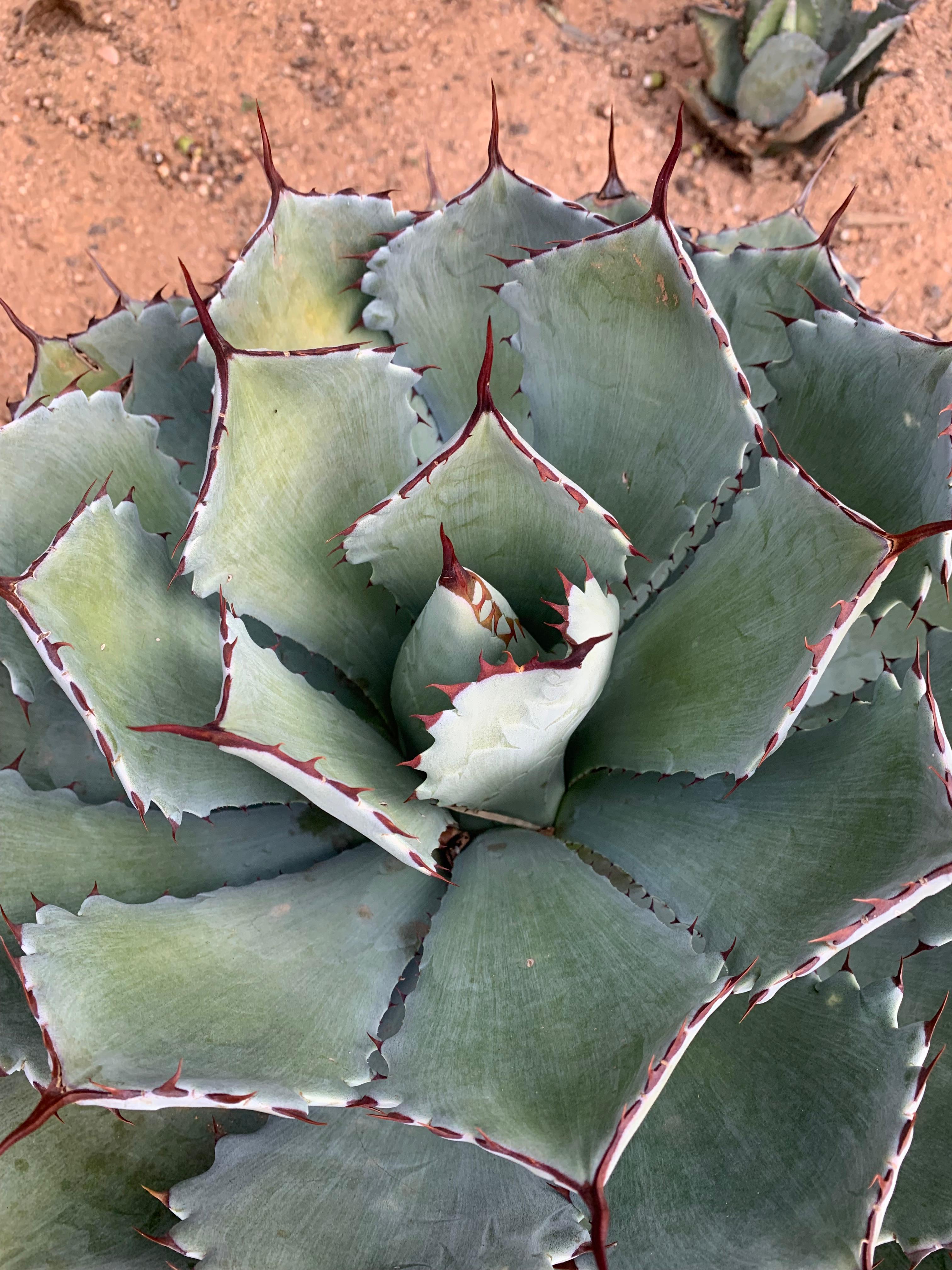
Agave Potatorum 'Butterfly Agave'
R150.00
Common Names: Butterfly Agave, Potatorum Agave
Family: Asparagaceae
Origin and Habitat
Agave potatorum, including the 'Butterfly Agave' cultivar, is native to the semi-arid highlands of southern Mexico, particularly in Oaxaca and Puebla. It grows in rocky, well-drained soils on slopes or cliffs, often in full sun or partial shade, thriving in environments with hot, dry summers and mild, dry winters. The 'Butterfly Agave' is a cultivated selection prized for its compact size and symmetrical, sculptural form, ideal for ornamental use in containers or xeriscapes.
Plant Description
Agave potatorum 'Butterfly Agave' forms a tight, symmetrical rosette, typically 30–60 cm wide and 25–40 cm tall, smaller than the species due to selective breeding. Its short, broad, spoon-shaped leaves are powdery blue-green to silvery-grey, with prominent reddish-brown to cinnamon-colored marginal teeth and a sharp, dark terminal spine. The leaves curve gracefully, resembling butterfly wings, and may show pink or red blushing under sun or drought stress. The plant produces few offsets, maintaining a solitary appearance. At maturity (10–15 years), it sends up a 2–3 m tall flower stalk with greenish-yellow to reddish flowers, attracting pollinators like hummingbirds, after which the main rosette dies. Its compact size and striking coloration make it a favorite for collectors.
Care Instructions
Light
'Butterfly Agave' thrives in full sun to partial shade. Indoors, place near a south- or west-facing window with at least 6 hours of bright light. Outdoors, it prefers full sun but may need light afternoon shade in very hot climates to prevent leaf scorching. Insufficient light can dull its powdery coating and reduce vibrancy.
Watering
Water sparingly using the “soak and dry” method, ensuring the soil dries out completely between waterings. In spring and summer, water every 10–14 days, depending on climate. In winter, reduce to once every 3–4 weeks, as the plant is semi-dormant. Overwatering leads to root rot, especially in cool, wet conditions.
Soil
Use a well-draining cactus or succulent potting mix with 50–70% mineral content like perlite, coarse sand, or pumice.
Temperature
Ideal temperatures range from 18°C to 29°C. It is hardy in USDA zones 9b–11, tolerating brief drops to -4°C, but requires protection from prolonged frost. In colder climates, grow indoors or use frost cloth for outdoor plants.
Additional Information
'Butterfly Agave' is highly valued for its compact, elegant form and distinctive powdery leaves, making it ideal for small containers, rock gardens, or as a focal point in succulent displays. It propagates primarily through offsets, though they are produced sparingly; separate pups after drying for 1–2 days and replant in well-draining soil. Seed propagation is possible but slow and less common. The plant is mildly toxic to pets and humans if ingested, and its sharp spines and teeth require careful handling. It’s susceptible to agave snout weevil and scale insects; monitor for chewing marks or wilting and treat with insecticidal soap if needed. Its low-maintenance nature and stunning, butterfly-like rosettes make it a standout addition to arid landscapes or indoor collections.
Plants
Explore our rare cycads, clivias, and succulents.
Shop
Garden
© 2025. All rights reserved.
(WhatsApp)
